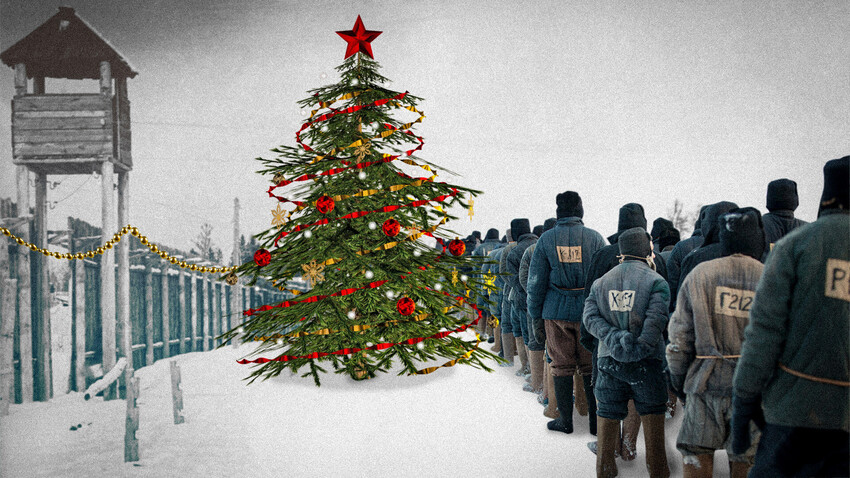
The atheistic Soviet authorities banned Orthodox Christmas, but they soon realized that people needed a winter holiday. So they "invented" a new one - in 1936 Stalin introduced the tradition of celebrating New Year’s on a grand scale all across the country.
"In the midst of the relentlessly bleak days of hard labor, humiliation, pain, hunger and lack of sleep, there were rare days of joy in the life of prisoners in the Stalin-era labor camps. As today, the most popular and most eagerly anticipated holidays were Christmas and New Year’s Eve," says Tatyana Polyanskaya, senior researcher at the Gulag History Museum.
By 1936 more than a million people were in Stalin's camps. And while the Soviet New Year had not yet become a popular holiday, it was predominantly Christmas that was celebrated and, of course, it was done secretly. Severe punishment awaited anyone who celebrated a religious holiday or breached camp rules. Such infractions could be reported to the administration by "snitches". The slightest carelessness could lead, at best, to the destruction of the celebratory trappings or, at worst, to the "guilty" person facing a stint in a punishment cell. So, it was all done at people's own peril and risk.
Christmas was celebrated on December 24 (Old Style, and not on January 7 as nowadays in Russia). On the actual day, the working hours were often deliberately extended to offend the feelings of believers and deprive them of their holiday. But the inmates made every effort to celebrate the occasion, create a festive atmosphere and preserve fond memories of it.
The festive meal had to be prepared well in advance - sometimes as early as autumn. The dishes were modest. Everyone tried to set aside some food from parcels they received from relatives, in particular those with a long shelf-life such as dried fruit, flour, sugar or dried fish.
All this was carefully hidden - "as a rule, in piles of snow in the yard because every corner of the camp would be gone over with a fine tooth-comb," recalled Vera Prokhorova, who spent six years in the camps in the 1950s. At nights, treats would be cooked in the stove that heated the prison barrack - cereals with honey and dried fruit, oven-dried potatoes and even pirozhki (pies).

A camp's barrack
Russian Federation state archiveProkhorova recalled that it was sometimes possible to wheedle a new bed sheet out of the camp authorities to replace one that had allegedly become unusable, and it would be pressed into service as an improvised tablecloth.
The prisoners also tried to bring fir branches into their barrack. In the run-up to Christmas those assigned to logging duties in the taiga would hide a small tree or branch under their prison clothes and secretly bring it back with them.
On the day itself, when the barrack had been locked up for the night, everyone sat down for a meal and prayed. The non-religious Communists were also invited to sit down, and in the majority of cases the atheists joined in. According to prisoners' recollections, representatives of different religions and ethnic groups celebrated together, and on Christmas Eve they had a tremendous sense of spiritual solidarity. Passages from the Gospels were recited and carols sung in different languages.
"In the camp barracks, a feeling of magic prevailed on Christmas Eve and then on New Year's Eve: United by a general excitement, hope for a better future and simply a sense of the joy of life, people of different ethnicities and backgrounds - political prisoners and ordinary criminals alike - felt a sense of comradeship towards one another," says Tatyana Polyanskaya.
At the same time, the camp administration adopted an indulgent attitude to the celebration of New Year’s and put no obstacles in the way of the prisoners. At first, only the Communist Party intelligentsia and atheists celebrated New Year’s in the camps, but within a short space of time the holiday became genuinely universal - another occasion for allowing something bright and positive in the prisoners' lives.
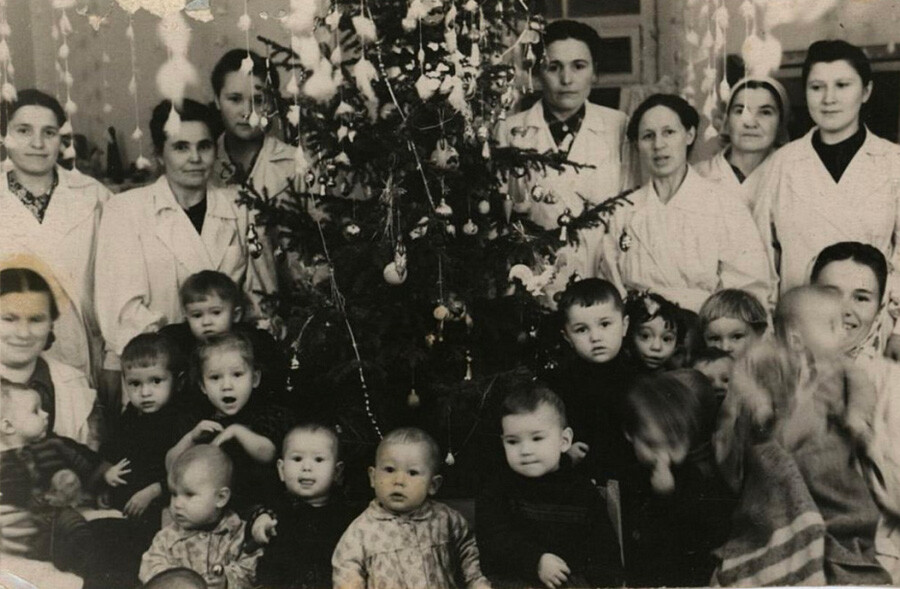
A New Year tree for nursery staff and camp children
Gulag History MuseumIn the late 1930s camp conditions grew harsher, bread rations were paltry and the prisoners were only given watery soup to eat. People clutched at any opportunity to organize even an ephemeral semblance of a celebration - and even a festive table was not essential for this purpose. They crafted improvised decorations for the holiday tree with whatever materials they could find and made presents and toys for the camp children (New Year’s was seen above all as a celebration for children).
Many inmates also tried to send reassuring messages to friends and family in the outside world and designed homemade cards. There are a number of such surviving cards sent home by engineer Alexei Silin, who served five years in the north for "anti-Soviet agitation", and Lyudmila Khachatryan, who spent eight years in the camps for marrying a foreigner.

Alexei Silin. Card from Kotlas, Arkhangelsk Region, 1944
Gulag History Museum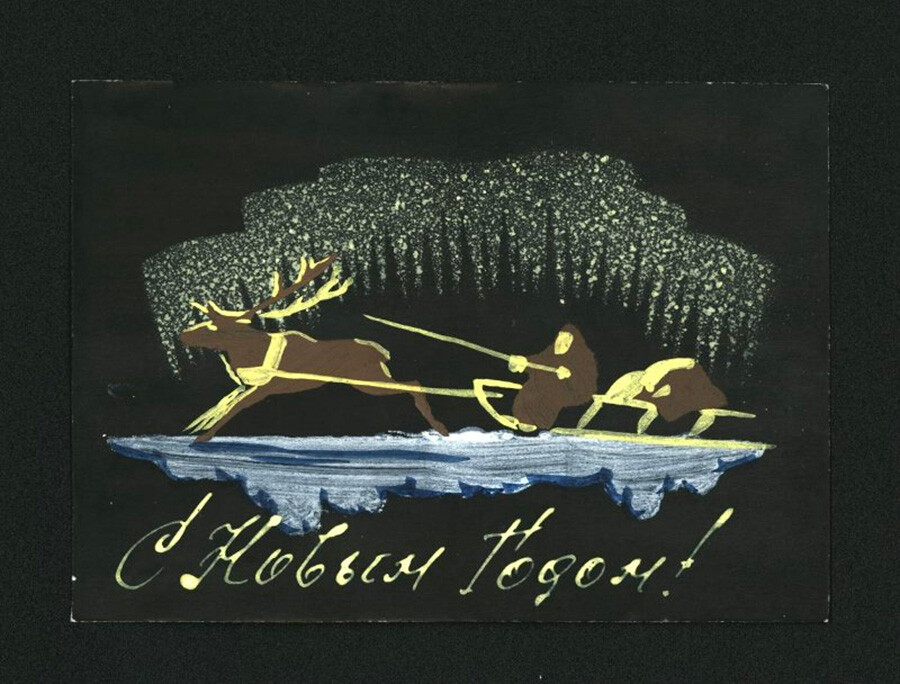
Alexei Silin. Card from Salekhard, Yamalo-Nenets Autonomous Okrug, 1952
Gulag History Museum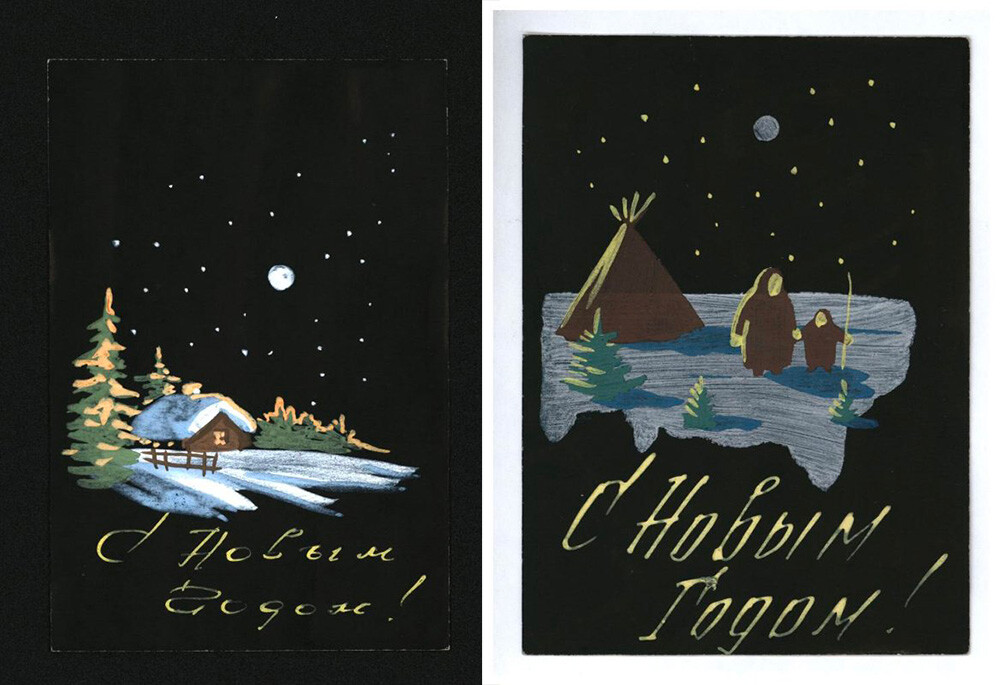
Alexei Silin. Cards from Salekhard, Yamalo-Nenets Autonomous Okrug, 1952
Gulag History Museum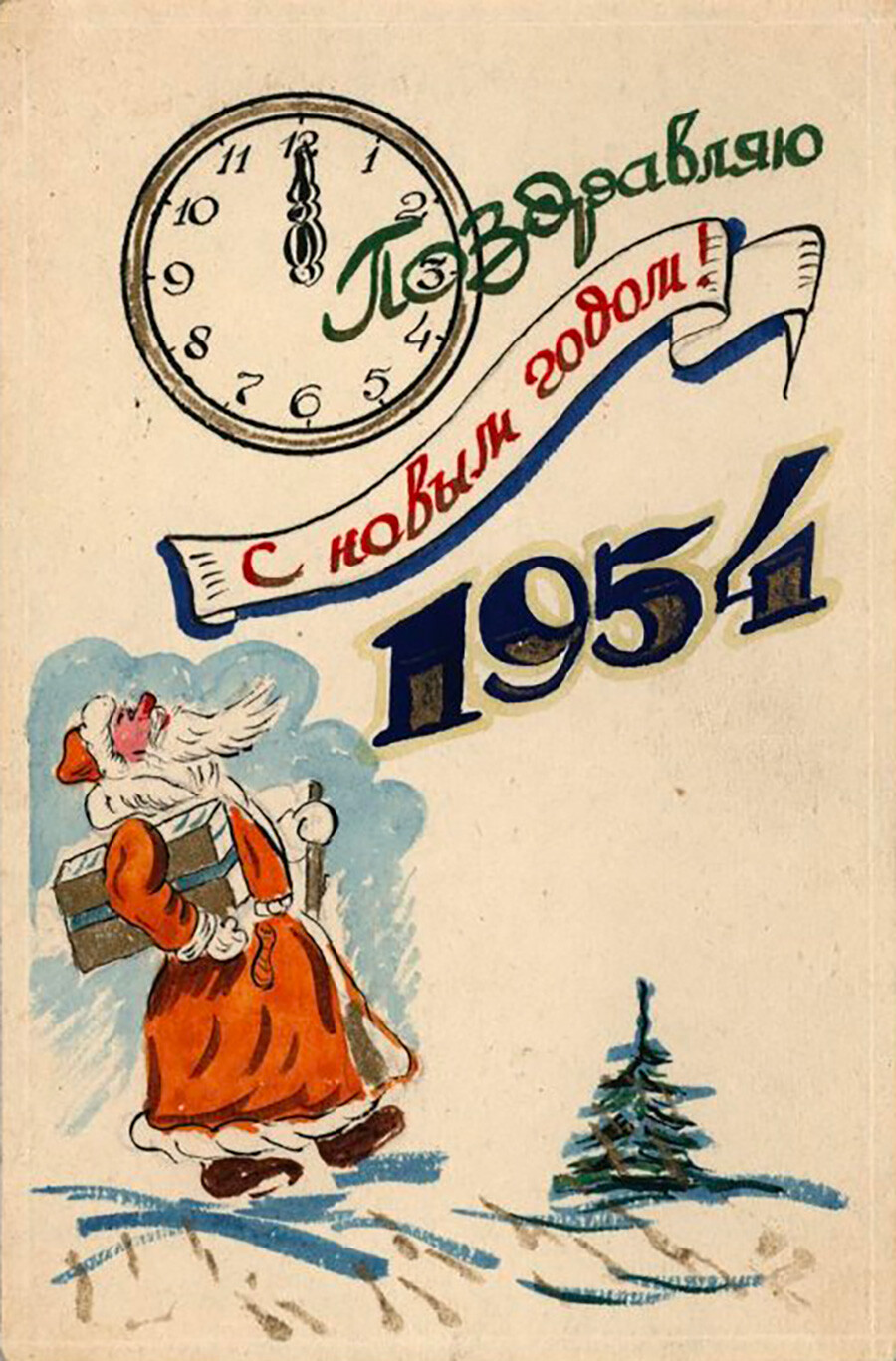
Lyudmila Khachatryan. Card, "Happy New Year! 1954"
Gulag History Museum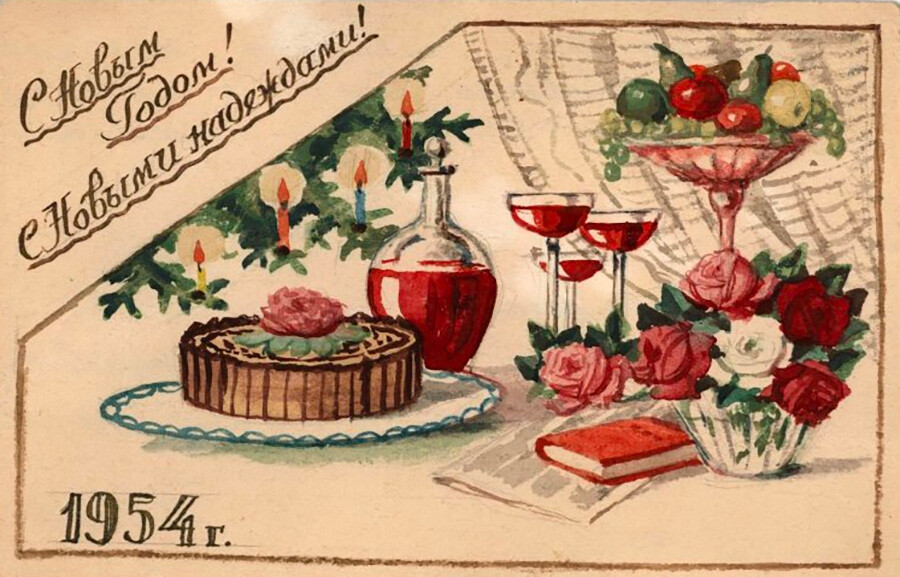
Lyudmila Khachatryan. "Happy New Year! Here's to New Hopes! 1954"
Gulag History MuseumDear readers,
Our website and social media accounts are under threat of being restricted or banned, due to the current circumstances. So, to keep up with our latest content, simply do the following:
If using any of Russia Beyond's content, partly or in full, always provide an active hyperlink to the original material.
Subscribe
to our newsletter!
Get the week's best stories straight to your inbox